
Smart Forfour Hatchback (2015-2019) engines, drive and performance
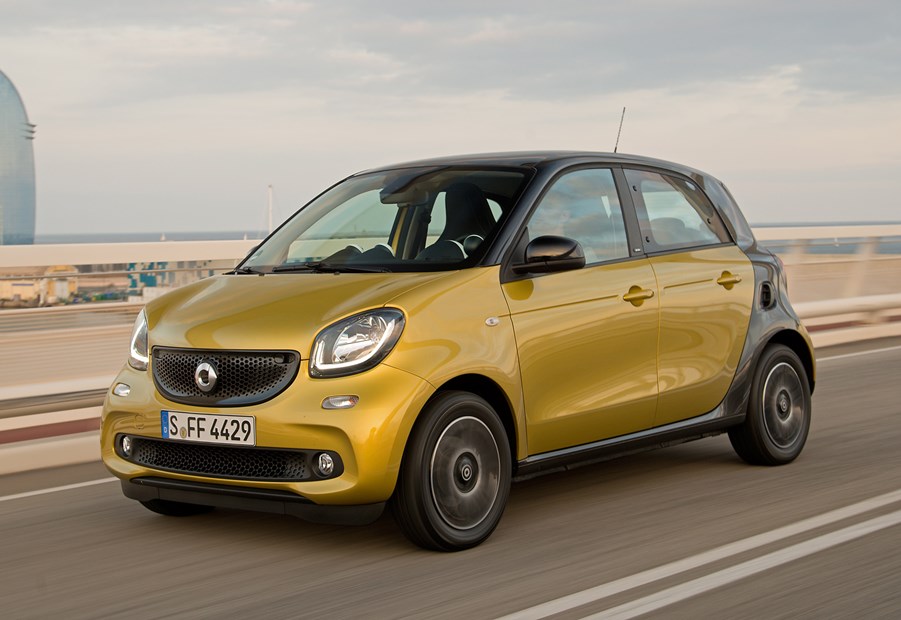
- Non-turbo engine is the largest at 1.0 litre
- Turbocharged 0.9 litre delivers useful pace
- Brabus is the most powerful but still not ‘hot’
The Smart Forfour’s performance is at best average, but for those who intend to drive primarily in cities it’s perfectly adequate.
Two petrol options for the main range
The Forfour has a choice of two Renault-built engines, which are installed under the boot floor and power the rear wheels.
The entry-level engine is simply known as the 71hp – its power output – because engine size badges and references are quickly becoming redundant in today’s downsized motoring landscape.
It’s somewhat ironic then, that this is the larger of the pair, a whole 1.0-litre of capacity in three-cylinder format giving it a distinctive thrum.
.jpg)
Peak power’s delivered at 6,000rpm meaning it needs to be worked hard to wring the speed potential from it but when you do it’ll reach an electronically governed top speed of 94mph. There’s just 92Nm of torque on tap from 2,850rpm ensuring it takes a yawning 15.9 seconds to complete the 0-62mph acceleration test, which is longer than the Twingo with similar engine.
That’s partly due to an extra few kilos, mostly made up of extra sound deadening and thicker glass, but as they improve on-the-move refinement we can live with the slightly sloth-like performance.
That’s with the standard five-speed manual gearbox; opt for the six-speed Twinamic dual-clutch automatic and that time extends to 16.9 seconds. At least the shift actions are smooth if not especially quick.
Making more sense, especially if you venture beyond the city limits frequently, is the turbocharged 0.9-litre motor, or the 90hp in Smartspeak.
Although on paper it sounds pretty slow with a 0-62mph time of 11.2 seconds, when sprinting up to 30mph the car feels quick and characterful when mated to a five-speed gearbox. It’s only when you want to make progress beyond that point that the engine begins to strain and can be a little noisy when accelerating. Plus, there’s a fair amount of wind noise intruding the cabin if you’re travelling over 40mph.
Forfour Electric Drive (tested September 2017, Richard Kilpatrick)
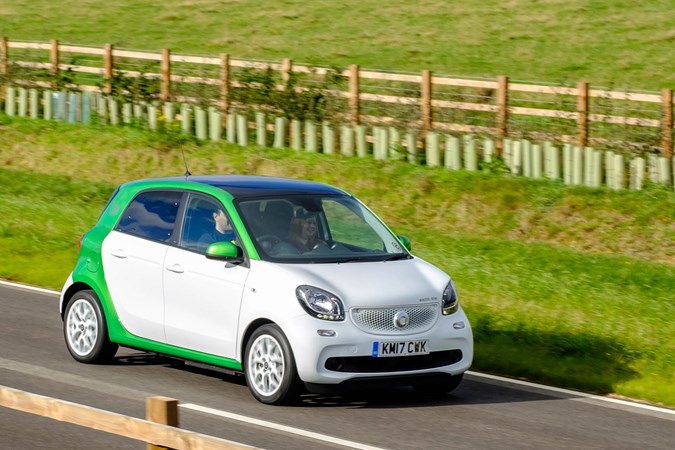
Removing the conventional engine from the Forfour leaves a package ideally suited for electrification, and in principle the Electric Drive is a very appealing entry-level EV.
However, weight increases to 1200kg with the battery packs that replace the fuel tank. 17.6Kw is enough to yield a 96 mile range, though in real-world conditions that will drop depending on your driving style, outside temperature and traffic levels.
On paper, the Electric Drive should be one of the most thrilling Forfour models to drive. It produces 80hp and more torque than any of the petrol models. However, power management plus the way that the motor’s constant torque is utilised without conventional gearing means that above 50mph, the promise of 160Nm is lost on winding A-roads, and traditional throttle and brake control won’t feel as natural or effective here.
There’s a different challenge in the Smart Electric Drive – learn how to use the Eco and regenerative modes to suit conditions. The latter will coast a little, the former aggressively uses the motor to charge the battery on lift-off, slowing the car effectively and becoming a new technique for approaching bends quickly.
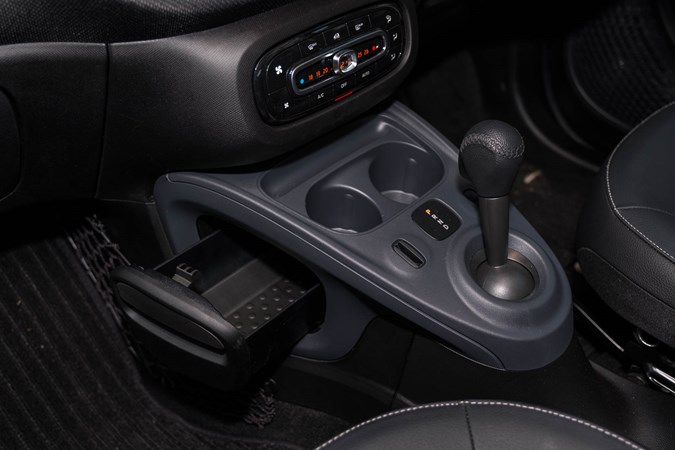
Once mastered it’s like solving a puzzle game, but it’s never truly enjoyable.
Being able to run ten miles to the train station, or four miles to the shop, feels like less of a chore (and more environmentally reasonable) than with traditional power; it’s also pleasantly quiet in a country environment.
Take the Smart Forfour Electric Drive on an extra-urban commute and mix with the normal dual-carriageway traffic, and the 80hp motor impresses with responsive acceleration and a remarkably strong range up to 70mph; maintaining speeds over 50mph comes with a price; range can drop to as low as 50 miles.
This is no different to a petrol car being driven hard, but of course refueling is easier and a larger amount of fuel is carried in the first place. As a small electric vehicle the Forfour Electric Drive is extremely charming and appealing; it’s just not up to competing with conventional rivals’ broad range of uses yet, and that includes petrol-powered Smarts.
Handling
- Supremely manoeuvrable around town
- Light steering and bodyroll mar fun
- Brabus is more engaging, but compromised
Since the engine is mounted at the rear of the car under the boot floor there’s a huge amount of space available for the Smart Forfour’s front wheels to be steered, which means it has an almost comically small turning circle.
It isn’t quite as good at this as the smaller Fortwo, but it’s still extremely easy to manoeuvre through city centres.
The steering is lighter and slightly less engaging than on the smaller Smart Fortwo Coupe and Cabrio twins, but it’s still fairly communicative considering it’s likely to spend its days pootling about on city streets rather than B-roads.
Thanks to its longer wheelbase it’s less prone than the Fortwo to pitch and dive during harder acceleration and braking but bodyroll is still evident, with the on-board stability electronics working overtime to keep everything pointing in the right direction.
Compared with the smaller Smarts the brakes feel more effective, the car being less skittish as a result, largely due to it being heavier at the rear – and ride comfort’s better, too.
Electric version isn’t electrifying
Swap out the whirling turbochargers and reciprocating pistons of the conventional Forfour’s engine for a spinning electric motor, and the effect is less marked than in other BEV conversions due to the rear engine layout and generous sound insulation on standard Smarts.
Near silent operation (quieter than Renault’s Zoe), smooth but insistent power delivery and a general feeling of being able to dart responsively through traffic make a great first impression.
On the road, though, the Smart’s bodyroll is marked and passengers will not thank you for spirited driving. Suspension that absorbs rough roads at a healthy pace with aplomb, becomes unsettled at A-road speeds, coping with 20% more weight from the battery pack. On good roads the ride is remarkably composed for a small car.
Naturally the BEV version uses low rolling resistance tyres. The Forfour’s safe understeer and stability-controlled neutrality remains intact, and grip is not a priority in a car of this performance. Braking is a blend of regenerative and conventional, and is reassuringly responsive.


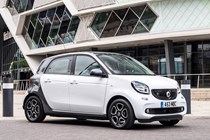
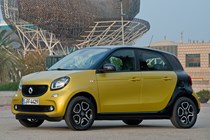
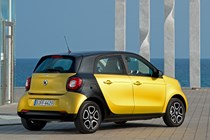
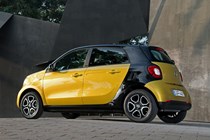
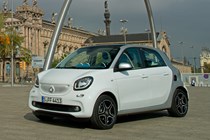
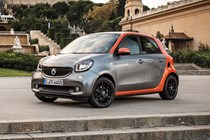
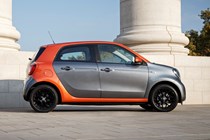
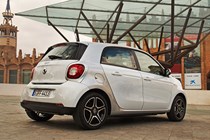
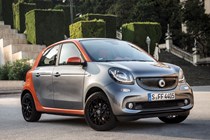
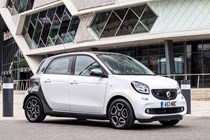
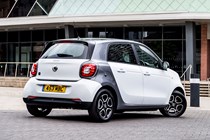
.jpg)
.jpg)
.jpg)
.jpg)
.jpg)
.jpg)
.jpg)
.jpg)
.jpg)
.jpg)
.jpg)
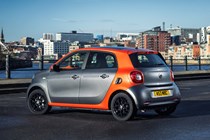
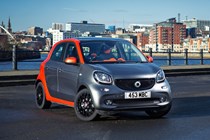

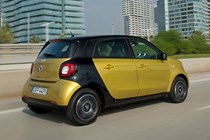
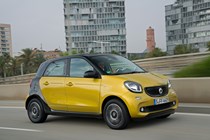
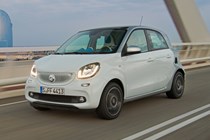
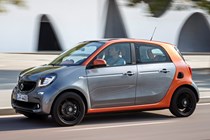
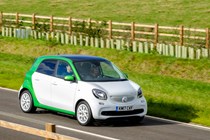
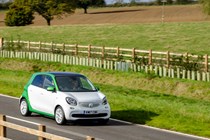
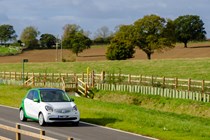



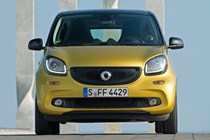
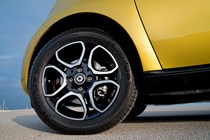
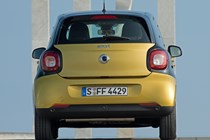
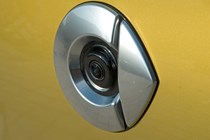
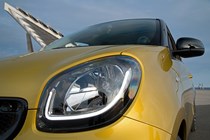
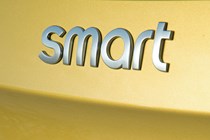
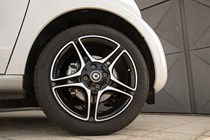
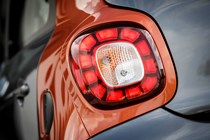

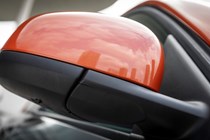

.jpg)
.jpg)
.jpg)
.jpg)
.jpg)
.jpg)
.jpg)
.jpg)
.jpg)
.jpg)
.jpg)
.jpg)
.jpg)
.jpg)
.jpg)
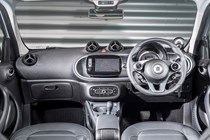
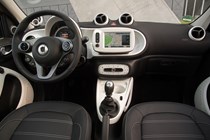
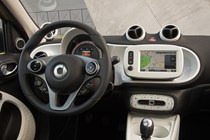
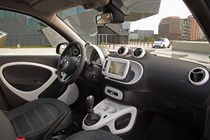
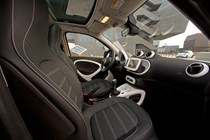
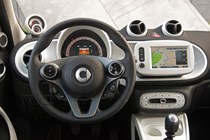
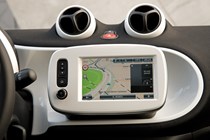
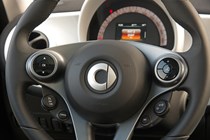
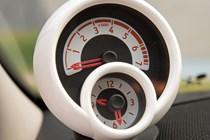
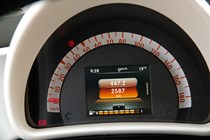

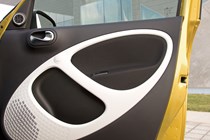
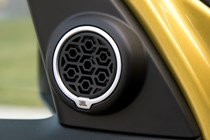
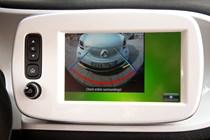
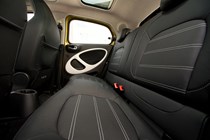
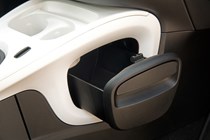


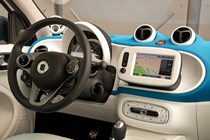
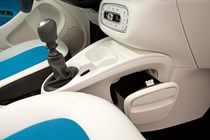
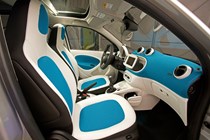
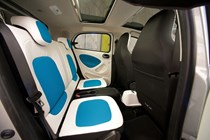
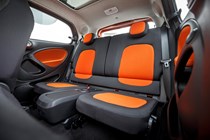
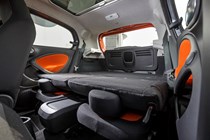

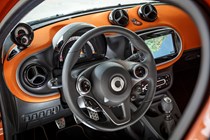
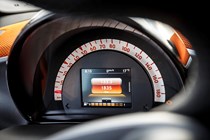
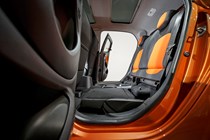
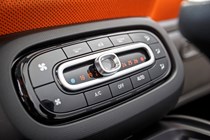

.jpg)
.jpg)
.jpg)
.jpg)
.jpg)
.jpg)
.jpg)
.jpg)
.jpg)
.jpg)
.jpg)
.jpg)
.jpg)
.jpg)
.jpg)
.jpg)
.jpg)
.jpg)
.jpg)
.jpg)
.jpg)
.jpg)
.jpg)
.jpg)
.jpg)
.jpg)

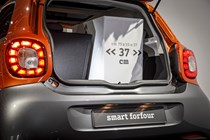
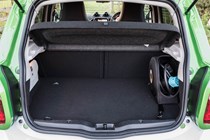
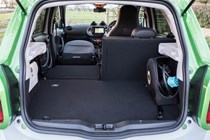
.jpg)
.jpg)
.jpg)
.jpg)
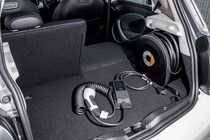
.jpg)
.jpg)
.jpg)











.jpg?quality=50)
.jpg?quality=50)
.jpg?quality=50)
.jpg?quality=50)
.jpg?quality=50)
.jpg?quality=50)
.jpg?quality=50)
.jpg?quality=50)
.jpg?quality=50)
.jpg?quality=50)
.jpg?quality=50)
























.jpg?quality=50)
.jpg?quality=50)
.jpg?quality=50)
.jpg?quality=50)
.jpg?quality=50)
.jpg?quality=50)
.jpg?quality=50)
.jpg?quality=50)
.jpg?quality=50)
.jpg?quality=50)
.jpg?quality=50)
.jpg?quality=50)
.jpg?quality=50)
.jpg?quality=50)
.jpg?quality=50)






























.jpg?quality=50)
.jpg?quality=50)
.jpg?quality=50)
.jpg?quality=50)
.jpg?quality=50)
.jpg?quality=50)
.jpg?quality=50)
.jpg?quality=50)
.jpg?quality=50)
.jpg?quality=50)
.jpg?quality=50)
.jpg?quality=50)
.jpg?quality=50)
.jpg?quality=50)
.jpg?quality=50)
.jpg?quality=50)
.jpg?quality=50)
.jpg?quality=50)
.jpg?quality=50)
.jpg?quality=50)
.jpg?quality=50)
.jpg?quality=50)
.jpg?quality=50)
.jpg?quality=50)
.jpg?quality=50)
.jpg?quality=50)




.jpg?quality=50)
.jpg?quality=50)
.jpg?quality=50)
.jpg?quality=50)

.jpg?quality=50)
.jpg?quality=50)
.jpg?quality=50)